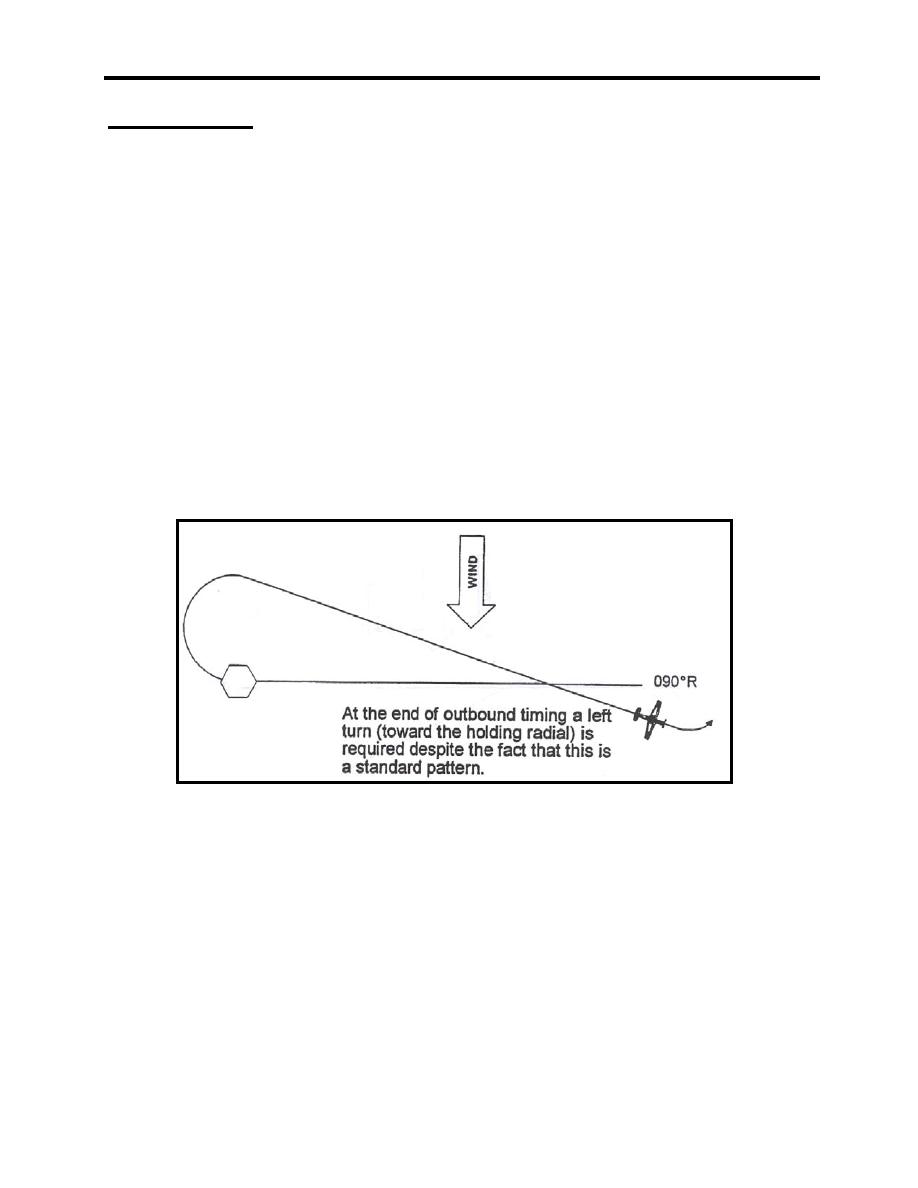 |
|||
|
|
|||
|
|
|||
| ||||||||||
|
|  CHAPTER SIX
T-34C INSTRUMENTS
NO WIND ORBIT
The outbound leg of the orbit would, of course, be unchanged. The nowind heading would be
held for one minute (or specified distance if holding at a DME fix). Next comes your inbound
turn. Normally you would expect a right turn for a standard pattern and a left turn for
nonstandard. This may not be the case. Look at Figure 626. Again, it is a standard holding
pattern EAST of the NAVAID on the 90R. Here, at the end of your outbound, nowind leg the
high NORTH wind has blown you SOUTH of the 90 radial. Since we always turn in the shortest
direction toward the holding radial (TAILRADIALTURN), a left turn is necessary. Always
check your position relative to the holding radial before an inbound turn.
The situation illustrated in Figure 626 has the potential to create some additional confusion. To
illustrate this, consider Figure 627, a further development of the situation in Figure 626. If you
turn left at point "A" (as required), your radius of turn could carry you over to the NORTH side of
the 90 radial. You would then stop the turn with an intercept set and figure wind direction at
point "B." Using the TAIL/RADIAL/WIND method indicates a SOUTH wind and we know this
is not the case. Remember, if you have to turn opposite the anticipated direction on the inbound
turn of your nowind orbit, there are strong winds affecting you. Be aware of this when
determining wind direction.
Figure 626 NoWind Orbit
6-44 RADIO INSTRUMENT FLIGHT PROCEDURES
|
|
Privacy Statement - Press Release - Copyright Information. - Contact Us |